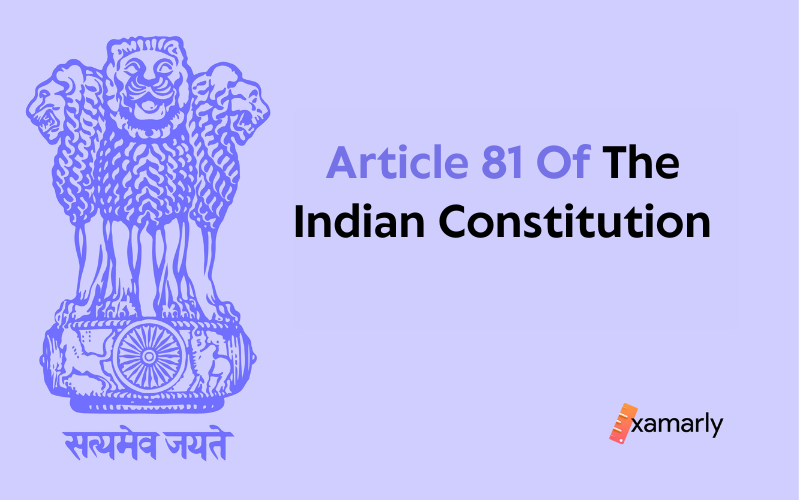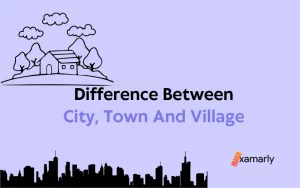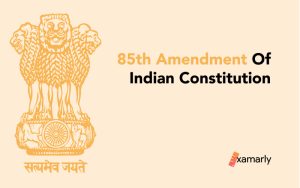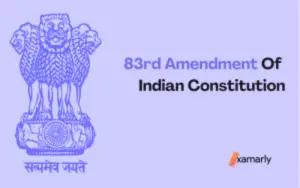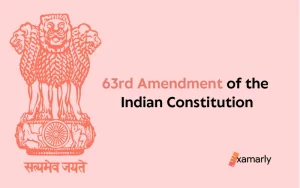The Lok Sabha is a temporary institution. By means of the universal adult franchise, the populace directly elects it.
Following the initial General Elections, which took place between October 25, 1951, and February 21, 1952, the Lok Sabha (House of People) was officially formed for the first time on April 17, 1952.
More discussion of the Lok Sabha’s composition will be covered in this article. Article 81 of the Indian Constitution is a part of the Indian Polity of UPSC and hence is beneficial for the UPSC preparation.
What Is Article 81 Of The Indian Constitution?
The Lower House of Parliament is constituted in accordance with Article 81 of the Constitution.
It stipulates that there can only be 550 elected members in the House and that no more than 20 of them must come from Union Territories.
Clauses Of Article 81
- The Lok Sabha shall, according to the provisions of article 331, be composed of:
- (a) no more than 531 members elected directly from State territorial constituencies, and
- (b) not more than 20 members chosen in accordance with any procedures that Parliament may by legislation specify to represent the Union territory.
- For the objectives of clause (1)(a):
- (a) a certain number of seats in the House of the People shall be awarded to each State in a way that ensures that, to the greatest extent possible, the proportion between that number and the State’s population is the same for all States; and
- (b) each State shall be split into geographical constituencies in such a way that, to the greatest extent possible, the proportion of each constituency’s population to the total number of seats assigned to it is the same across the State:
With the exception that the provisions of this clause’s subclause (a) shall not apply to the allocation of seats in the House of Representatives to any State as long as its population does not surpass six million
- The population identified during the most recent census for which relevant figures have been made public is referred to as the “population” in this article. Given that the reference in this clause to the most recent census for which the pertinent numbers have been published shall be construed until the pertinent data for the first census taken after the year 2026 have been published,—
- (ii) as a reference to the 1971 census for the objectives of clause (2)’s subclause (a) and the proviso to that clause; and
- (ii) as a reference to the 2001 census for the purposes of clause (2)’s subclause (b).
Amendments Of The Indian Constitution Amended Article 81
Following amendments amended Article 81 of the Constitution of India:
- 2nd Amendment of the Indian Constitution
- 6th amendment of the Indian Constitution
- 14th amendment of the Indian Constitution
- 31st amendment of the Indian Constitution
- 35th amendment of the Indian Constitution
- 36th amendment of the Indian Constitution
- 42nd amendment of the Indian Constitution
- 84th amendment of the Indian Constitution
- 87th amendment of the Indian Constitution
What Caused The Changes In The Number Of Seats?
- Not always have there been 543 seats in the Lok Sabha.
- The Lok Sabha was originally allowed to have 500 members, according to Article 81. There were 497 members of the first House when it was formed in 1952.
- Since the Constitution stipulates that population should be used as the basis for the allotment of seats, the makeup of the Lower House has also varied with each Census up to 1971.
Delimitation
Reshaping the borders of the state and House of People seats to reflect population changes is a procedure known as delimitation.
In 1976, the “delimitation” process was put on hold until 2001.
Reorganization Of States
- Not just the delimitation exercises in 1952, 1963, 1973, and 2002 affected the makeup of the House. Other situations existed as well.
- For illustration, with the reorganization of the state of Madras, the first modification in the makeup of the Lok Sabha occurred in the year 1953.
- Following the creation of the new state of Andhra Pradesh, 28 of the 75 seats in Madras were transferred to that region. The House remained at its overall strength of 497 members.
- Following the country’s general state restructuring in 1956, which resulted in the creation of 14 states and six UTs, the first significant alteration was made.
- As a result, the borders of the current states were altered, which affected how seats were distributed among the states and UTs.
- The composition of the Lower House altered as a result of:
- the liberation of Goa and Daman and Diu in 1961 and
- the separation of the state of Haryana from Punjab in 1966.
Other Factors
On a few occasions, it was necessary to alter the number of seats in the Parliament and the Assembly allotted to each state.
Among them are the
- attainment of statehood by Arunachal Pradesh and Mizoram in the year 1986,
- the establishment of a Legislative Assembly for Delhi’s National Capital Territory, and
- the creation of new states like Uttarakhand.
When It Was Frozen?
According to Article 81, the Lok Sabha’s makeup should reflect population changes.
But since the delimitation that was made based on the 1971 Census, it has essentially remained the same.
According to Article 81, every state must have the same population-to-seat ratio.
This implied, even if it wasn’t meant to, that states with less of a focus on population control would wind up with more seats in Parliament.
There was a risk of fewer seats being available in states in the South that embraced family planning.
In order to soothe these worries, the Constitution was altered amid Indira Gandhi’s Emergency rule in the year 1976 to defer delimitation until the year 2001.
Reasons For The Freeze
- Even though another amendment delayed this until 2026, the freeze on the number of Lok Sabha and Assemblies seats was supposed to be lifted following the Census of 2001.
- This was justified by the fact that by 2026, the nation’s population growth rate would have been constant.
- As a result, the 2008 delimitation process, which was completed, was based on the 2001 Census and only involved readjusting the boundaries of the existing Lok Sabha and Assembly seats as well as the number of seats reserved for Scheduled Caste and Scheduled Tribes.
- States in northern India, whose populations have grown more rapidly than those in the rest of the nation, are said to be underrepresented in Parliament as a result of the number of seats being constant since the 1970s.
- It is widely asserted that states like Bihar, Uttar Pradesh, and Madhya Pradesh would have gained some seats and those in the South would have lost some seats if the original provision of Article 81 of the Indian Constitution had been put into effect today.
Article 331 And House Of People
- The President may nominate two Anglo-Indians to the House of Representatives under Article 331 of the Indian Constitution if he believes that the community is not sufficiently represented there.
- Frank Anthony, the leader of the All India Anglo-Indian Association, is credited with the conception of such nominations.
- He recommended adding Article 331 to the Constitution to Jawaharlal Nehru, who did so.
Anglo-Indian Community And House Of People
- In the Lok Sabha, there were two seats set aside for Anglo-Indians from 1952 and 2020.
- In accordance with the government of India’s recommendation, the president of India nominated these two candidates.
- The 126th Constitutional Amendment Bill of 2019, when it became the 104th Constitutional Amendment Act of 2019, abolished the Anglo-Indian reserved seats in the Indian Parliament and State Legislatures in January 2020.
Conclusion
The Lok Sabha may have a maximum of 550 members, according to Article 81 of the Indian Constitution of 1949. Previously, it was 552, but the requirement for 2 nominated Anglo-Indian individuals has been eliminated.
Out of the total number of members allowed, no more than 530 must be elected directly from territorial seats inside the Indian states.
The Union Territories will be represented by no more than 20 members, chosen in accordance with any provisions made by legislation in the Indian Parliament.
FAQs
Which Amendment Amended Article 81?
2nd amendment, 6th amendment, 14th amendment, 31st amendment, 35th amendment, 36th amendment, 42nd amendment, 84th amendment, 87th amendment are the amendments that amended article 81.
What 2nd Amendment Has Been Amended To Article 81?
By altering Article 81(1)(b) of the Constitution, the Second Amendment to the Indian Constitution eliminated the maximum population threshold for a parliamentary constituency.
What 31st Amendment Has Been Amended To Article 81?
The Indian Constitution’s 31st Amendment increased the number of seats in the Lok Sabha from 525 to 545.
What Is The Sanctioned Strength Of The Lok Sabha?
The maximum number of Lok Sabha members allowed under Article 81 of the 1949 Indian Constitution is 552.
A total of 530 members must be chosen by direct election from territorial constituencies within the Indian states out of the total number of members allowed. The Union Territories shall be represented by no more than 20 Members of the Parliament of India, appointed in accordance with the provisions of law.


